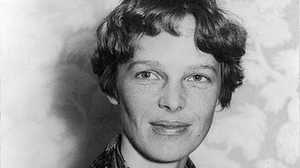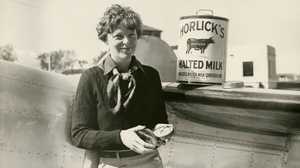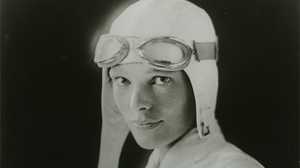Photo gallery of Significant Women in Flight of the 20th Century. Gallery includes Bessica Raiche, Harriet Quimby, the Stinson Sister, Bessie Coleman, Anne Morrow Lindbergh, Amelia Earhart, Laura Ingalls, Osa Johnson, Jacqueline Cochran, Betty Skelton, Jerrie Mock, Emily Howell Warner, Jeana Yeager, Patty Wagstaff, and Victoria Van Meter.
-
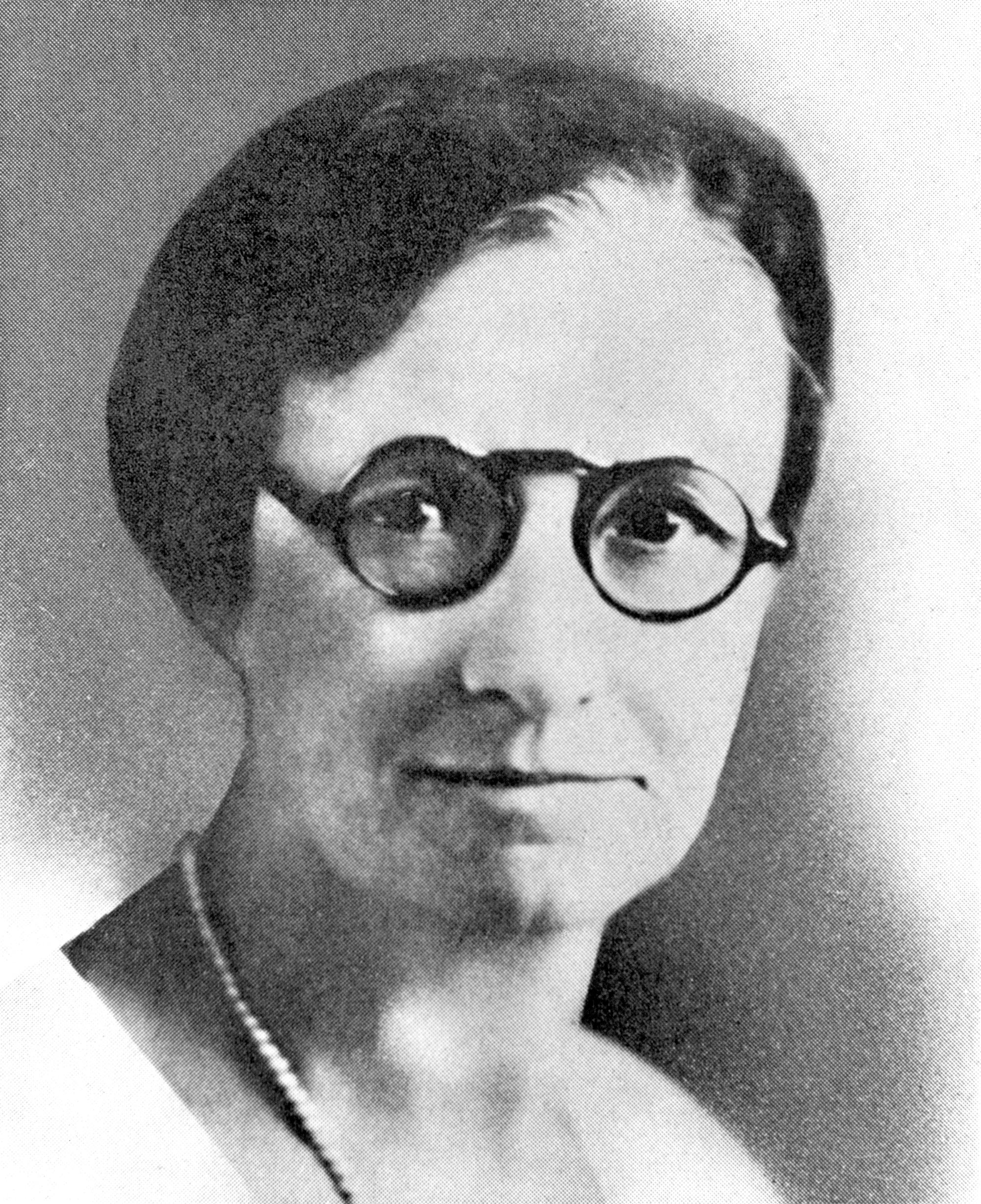
On September 16, 1910, Bessica Raiche made a solo flight in a Wright-type plane of bamboo and silk that she and her husband built in their living room, earning her a gold medal as America’s first woman aviator. She would become more well-known after entering the field of medicine and becoming one of America’s first female specialists in obstetrics and gynecology.
Credit: Smithsonian Institution, 2007-5475 -
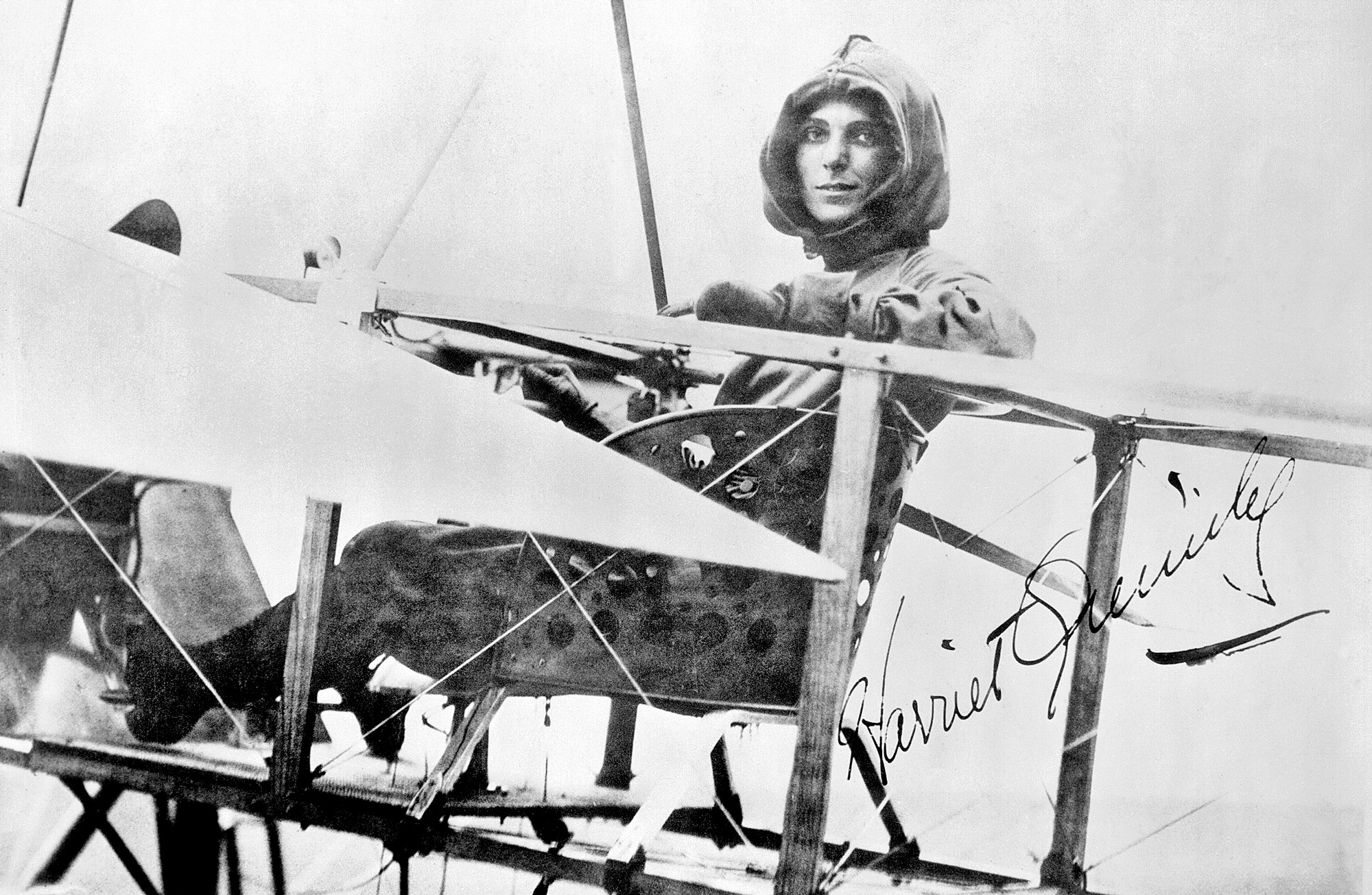
One of the most popular pioneer aviators, Harriet Quimby was the first American woman to gain a pilot’s license (1911), to fly at night, and to pilot alone across the English Channel (1912). On July 1, 1912, Quimby was flying in the Third Annual Boston Aviation Meet with event organizer William Willard when their plane flipped over and ejected both of them, causing them to fall to their deaths in Dorchester Bay.
Credit: Smithsonian Institution, 2002-23705 -
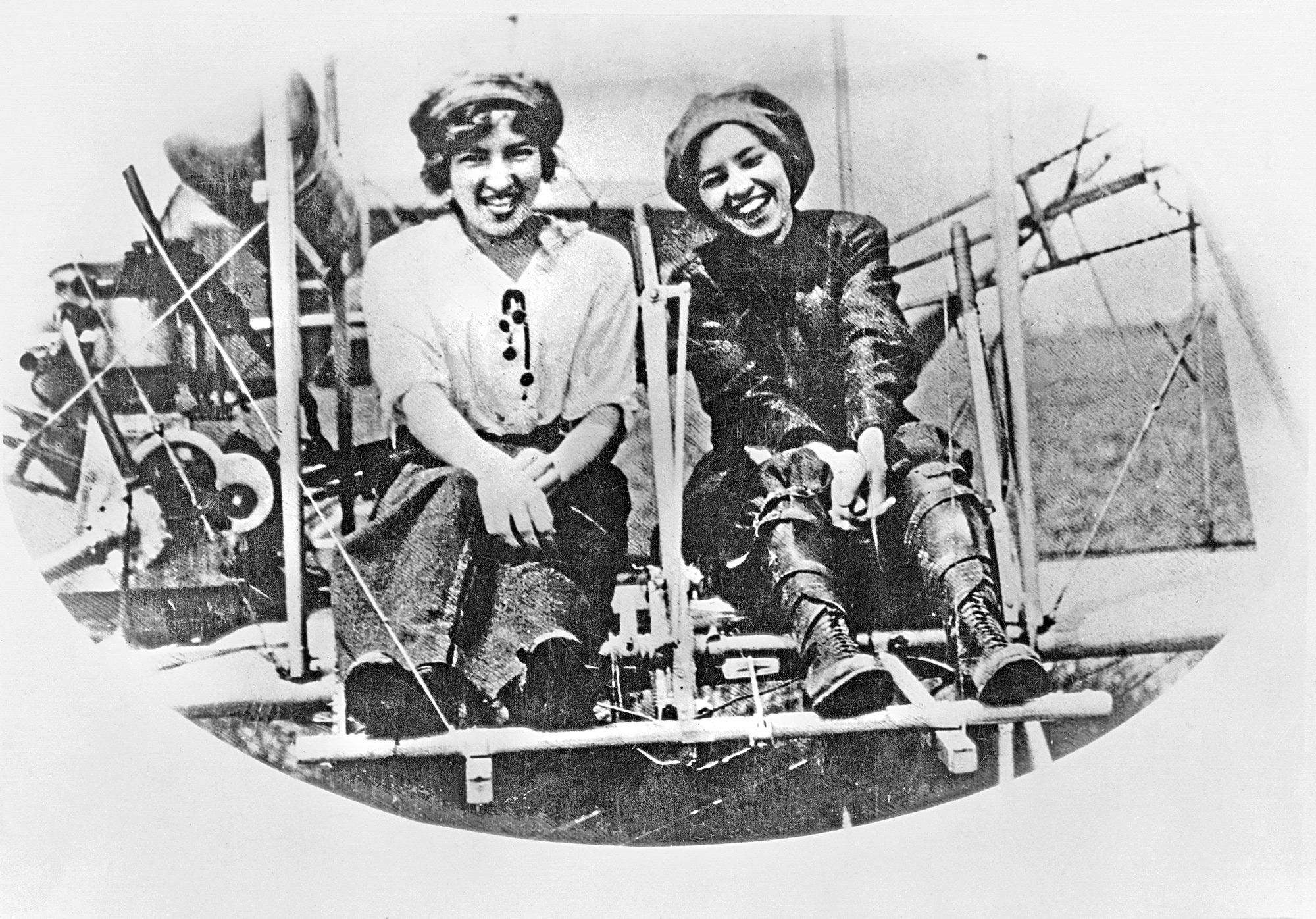
Sisters Marjorie and Katherine Stinson opened a flight school in San Antonio, TX where they trained cadets for the Royal Canadian Flying Corps. Katherine, the fourth American woman to obtain a pilot’s license, flew airmail routes for the U.S. government and did exhibition flying. Marjorie was less successful in establishing an airmail route but became well known for her instruction at the Stinson School, and eventually became a draftsman for the Navy’s Aeronautical Division.
Credit: Smithsonian Institution, 2007-5474 -
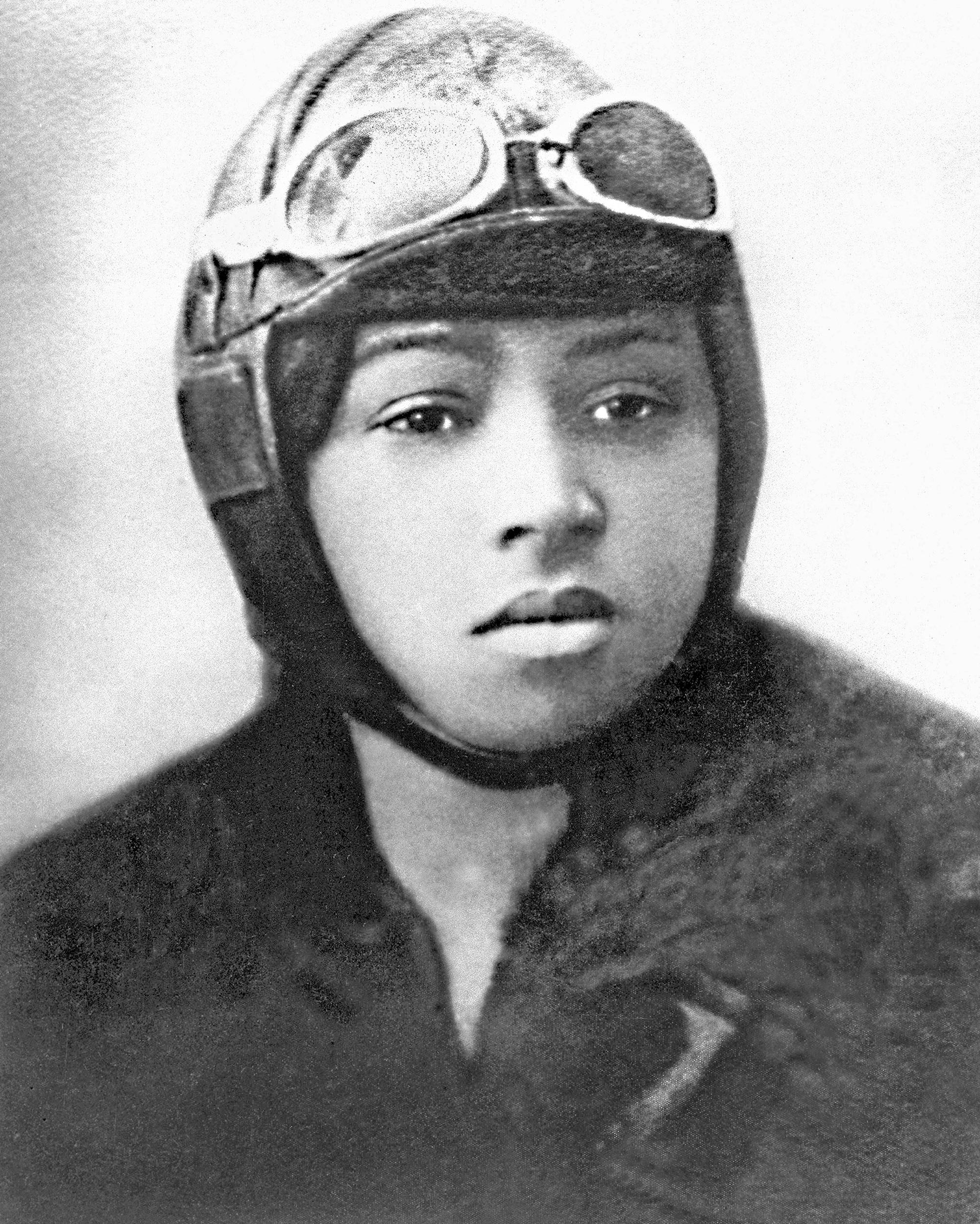
Bessie Coleman was the first African American and the first of native American descent to earn a pilot’s license and the first American to hold an international pilot’s license, which she received on June 15, 1921 from the Federation Aeronautique Internationale. She performed in airshows until April 30, 1926, when the biplane she was a passenger in flipped and she fell to her death. To this day, Coleman is honored every year by pilots who fly over and drop flowers on her grave in Chicago on the anniversary of her death.
Credit: Smithsonian Institution, 80-12873 -
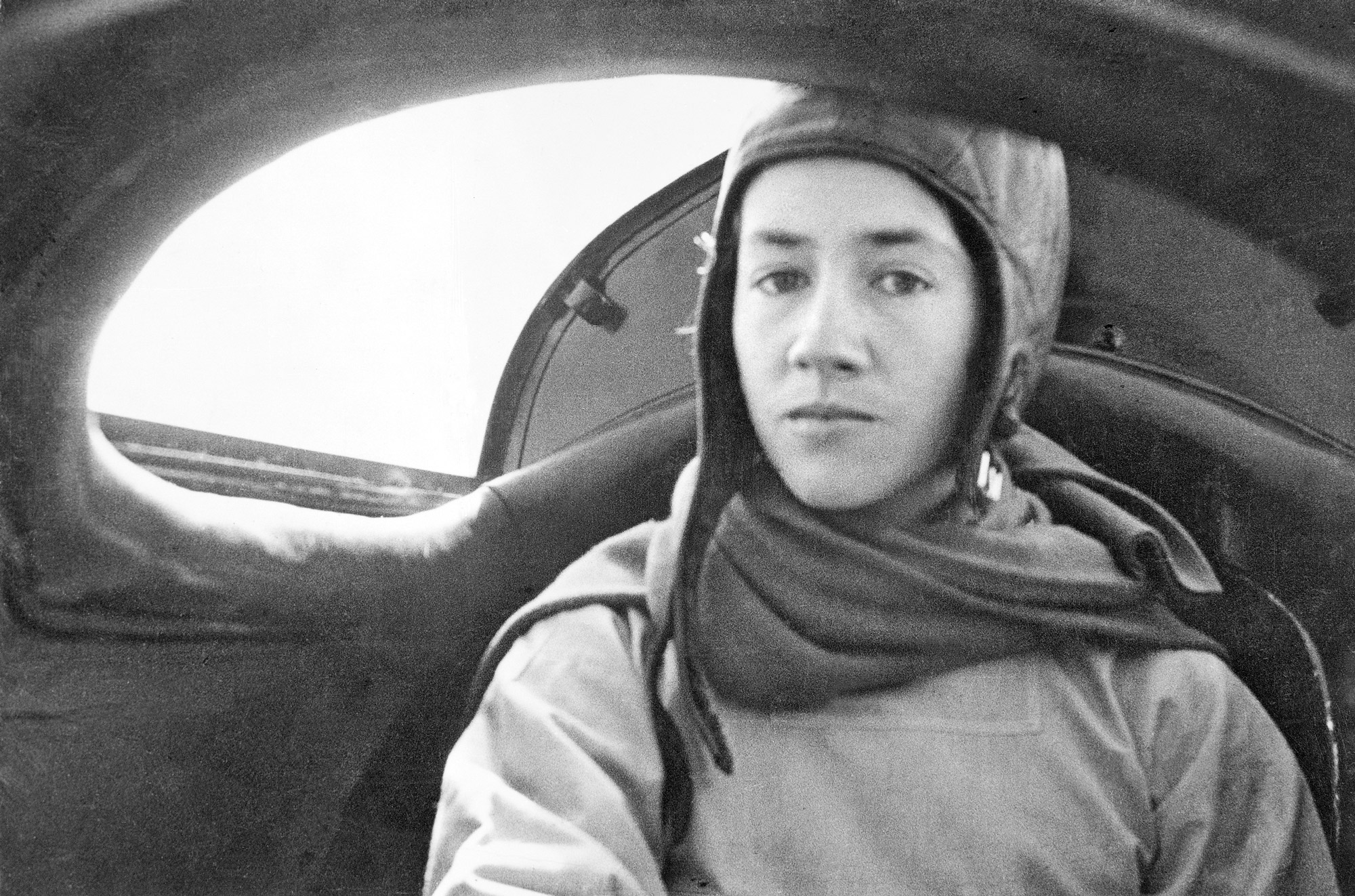
Anne Morrow Lindbergh, wife of famed pilot Charles Lindbergh, became the first woman in the U.S. to earn a glider pilot’s license in 1930. She got her private pilot’s license in 1931, and famously flew with her husband in the “Great Circle” through Canada, Alaska, and Asia. She was also the first woman to receive the National Geographic Society’s Hubbard Gold Medal, and went on to write several books, including “Listen the Wind” and “Bring me a Unicorn”.
Credit: Smithsonian Institution, 80-438 -

Amelia Earhart was the first woman to fly across the Atlantic Ocean, both as a passenger and as a solo pilot. The most famous female aviation pioneer, Earhart was a celebrity during her lifetime and a legend after her mysterious death in 1937 when she disappeared without a trace before reaching Howland Island on her never completed around-the-world flight.
Credit: Smithsonian Institution, 2004-11247 -
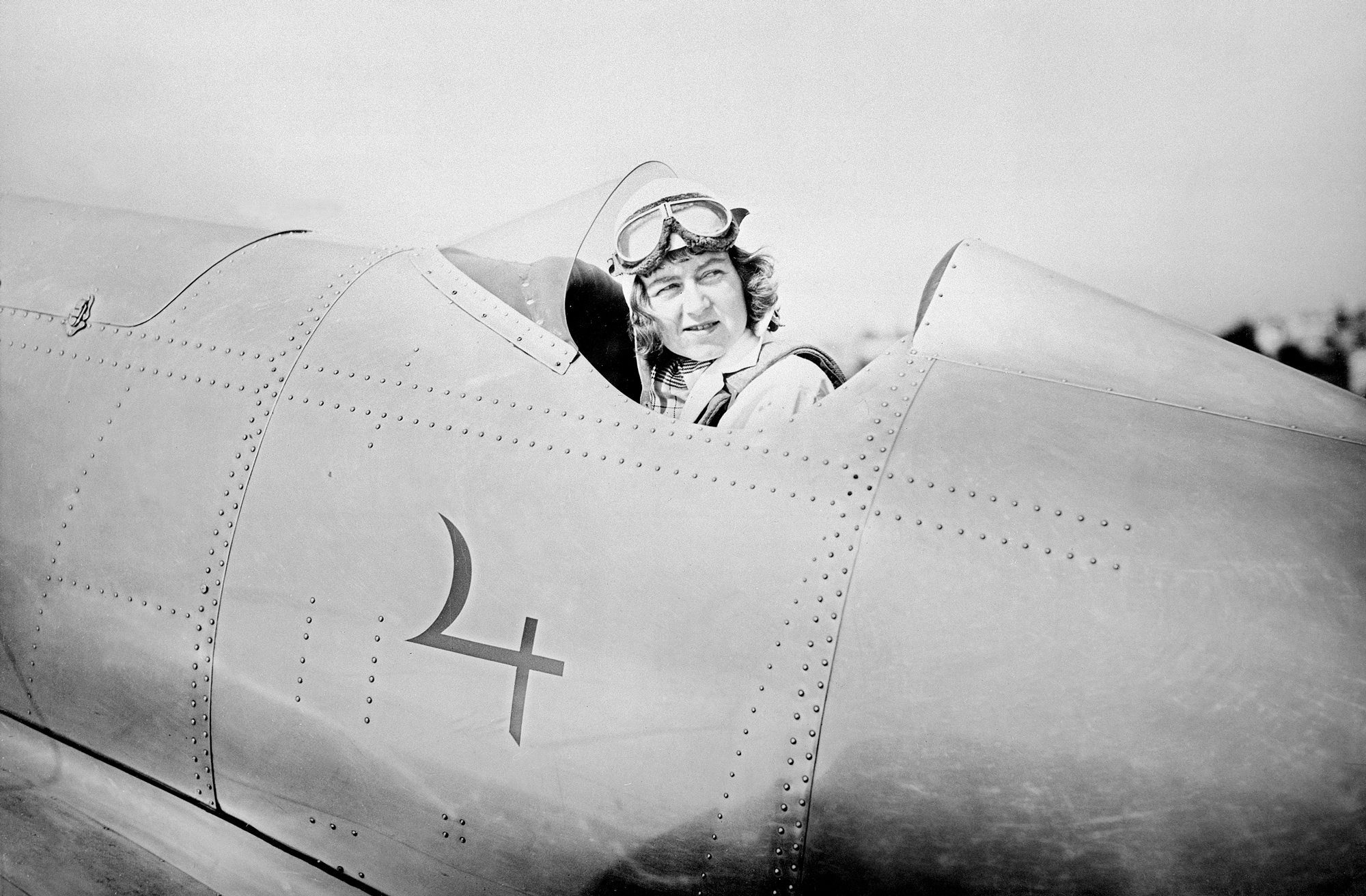
Laura Ingalls set a number of aviation records, the most memorable of which were the first flight by a woman from North to South America and the first flight by an American woman over the Andes. She won the Harmon Trophy for Most Outstanding Female Aviator of 1934, but her aviation career ended when she was accused of being a German spy.
Credit: Smithsonian Institution, 79-3163 -
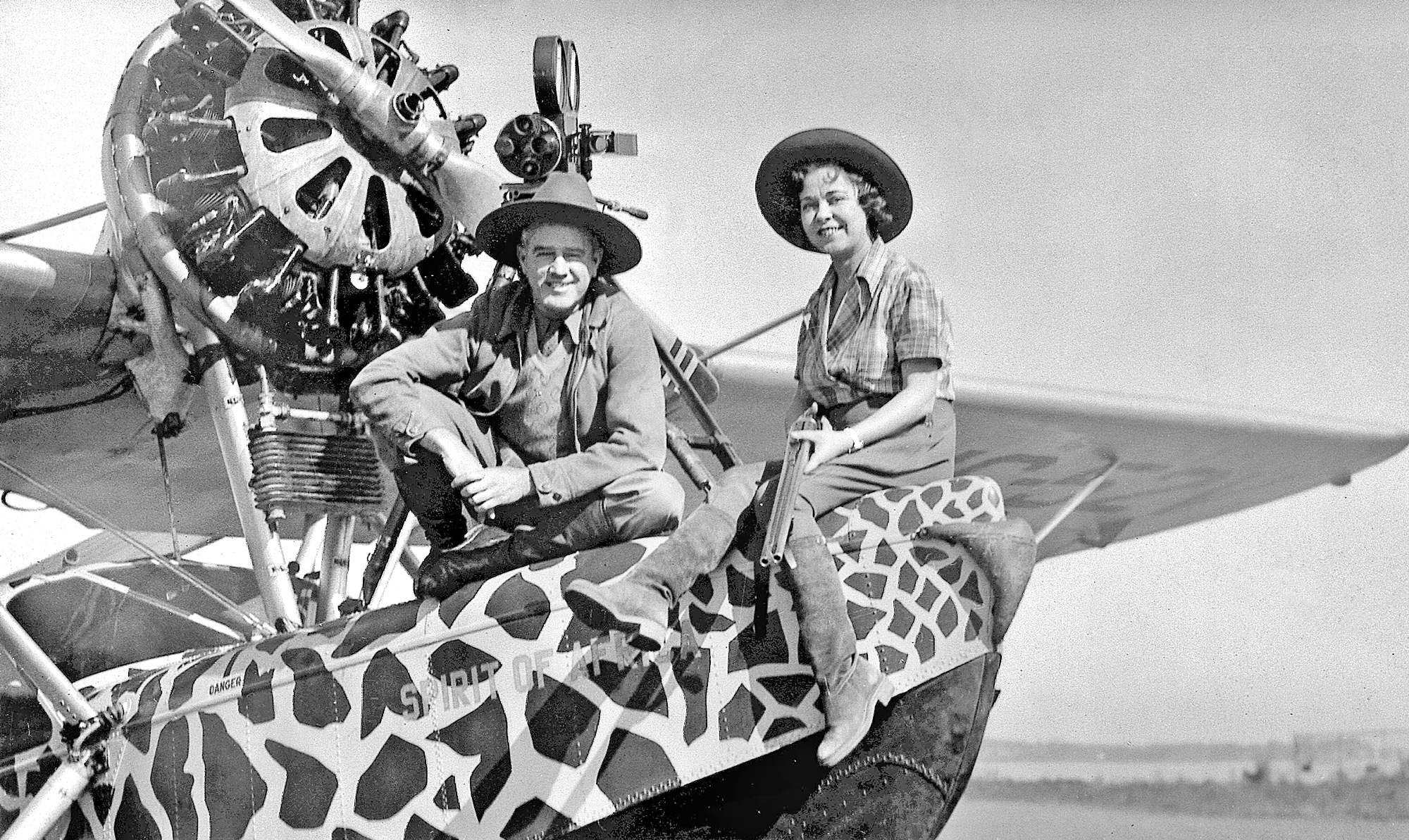
Osa Johnson, along with her husband Martin, flew across Africa and Borneo photographing and filming the landscape in the 1930s. They took the first aerial photograph of Mt. Kilimanjaro, photographed the Valley of the Kings and the pyramids in Egypt, and filmed aerial safaris of animal herds on the Serengeti and rainforest jungles in Borneo.
Credit: Smithsonian Institution, 83-3796 -
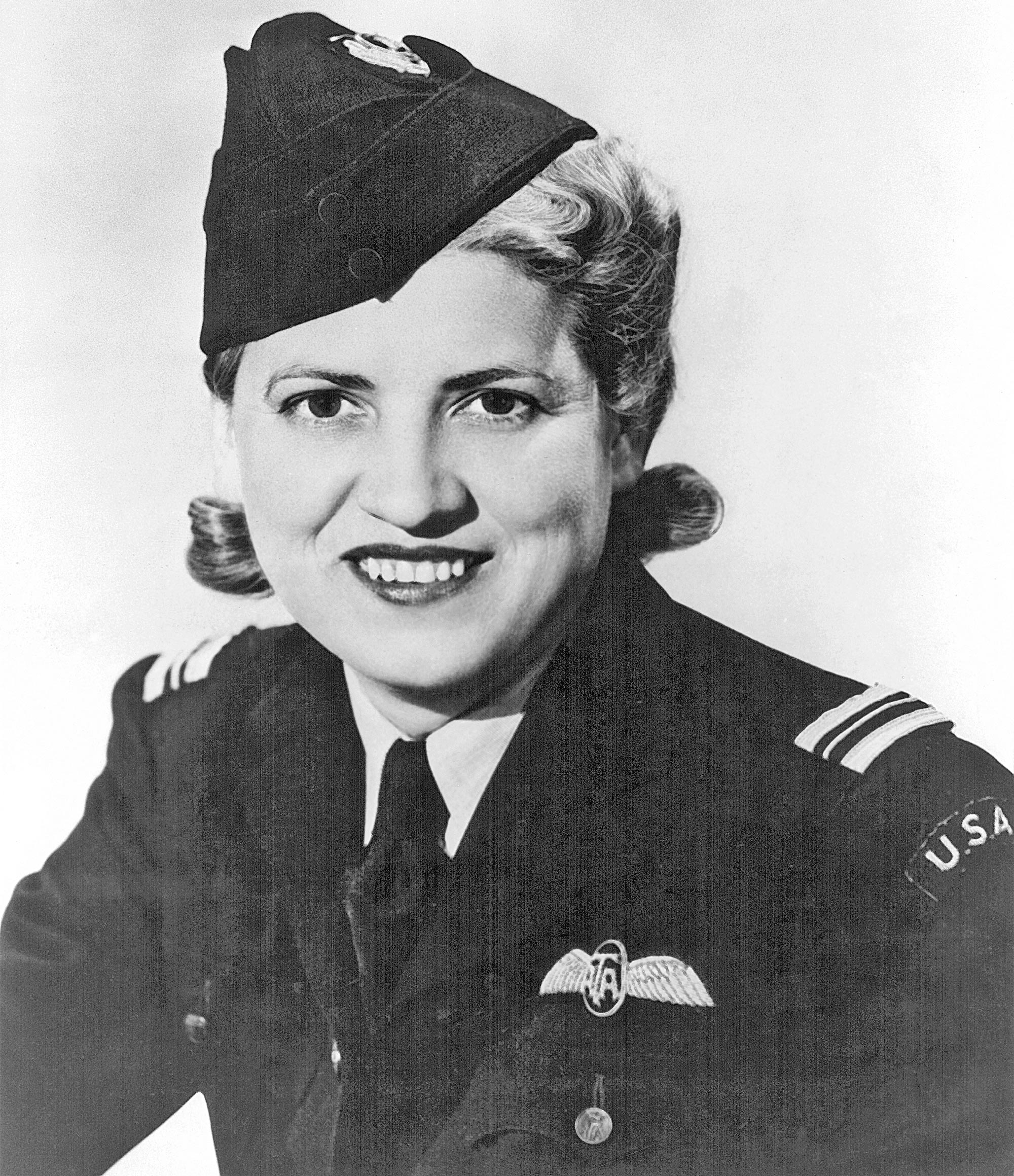
14-time Harmon Trophy winner Jacqueline Cochran set the most speed, distance, and altitude records of any pilot, before or since, in aviation history. Cochran trained female pilots in WWII, and she was the first woman to fly a WWII bomber across the Atlantic, to land and take off from an aircraft carrier, to break the sound barrier (1953), and to be president of the Federation Aeronautique Internationale (1958 – 1961).
Credit: Smithsonian Institution, 2003-7208 -
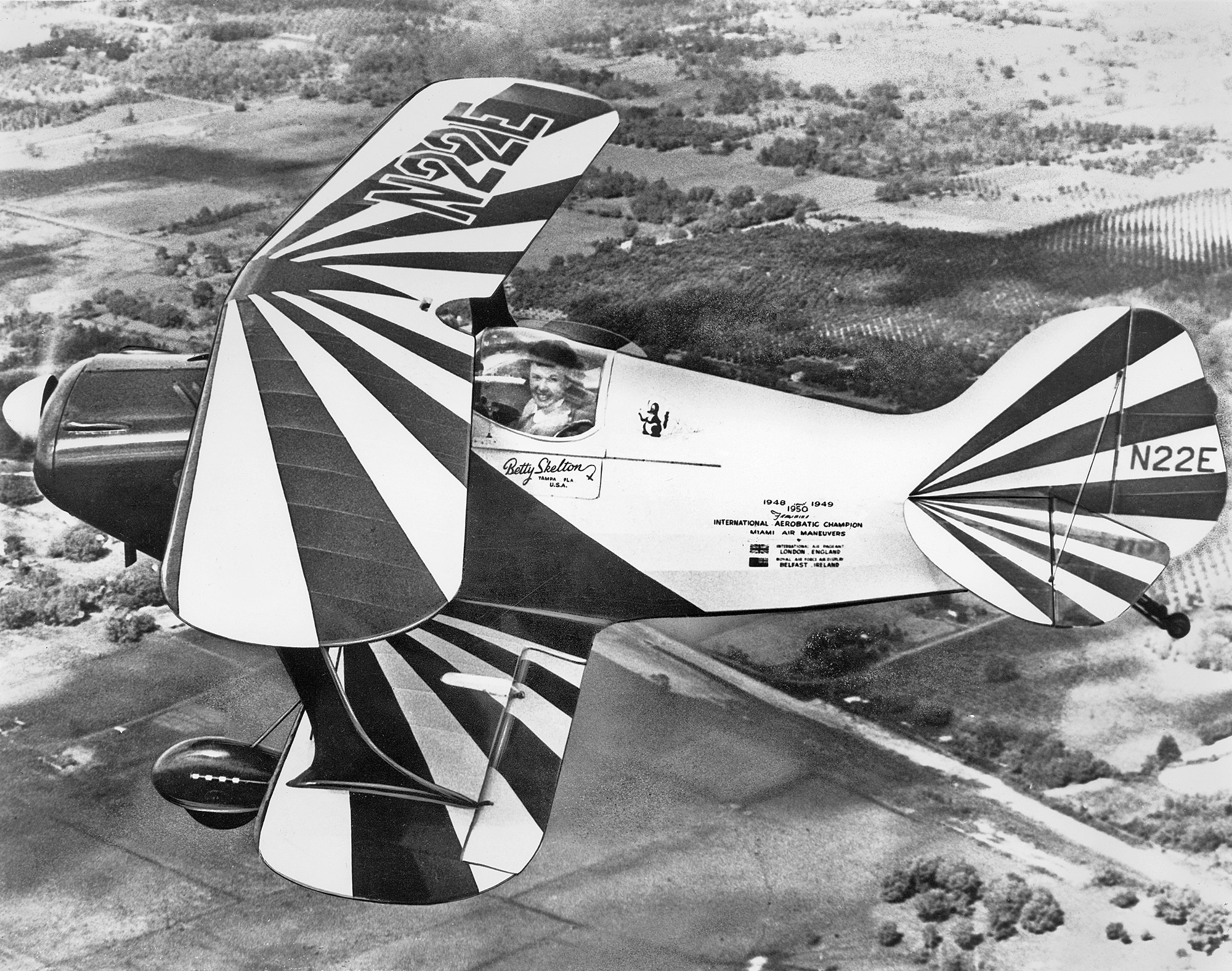
Betty Skelton became known as “the First Lady of Firsts” because of all the speed, distance, and height records she set in aviation, auto racing, and astronautics. Skilled at aerobatic tricks and stunts, she won the U.S. Feminine Aerobatic Championship three years in a row staring in 1948. She was the first woman inducted in the International Aerobatic Club’s (IAC) Aerobatic Hall of Fame, the International NASCAR Hall of Fame, and the Corvette Hall of Fame.
Credit: Smithsonian Institution, 95-8289 -
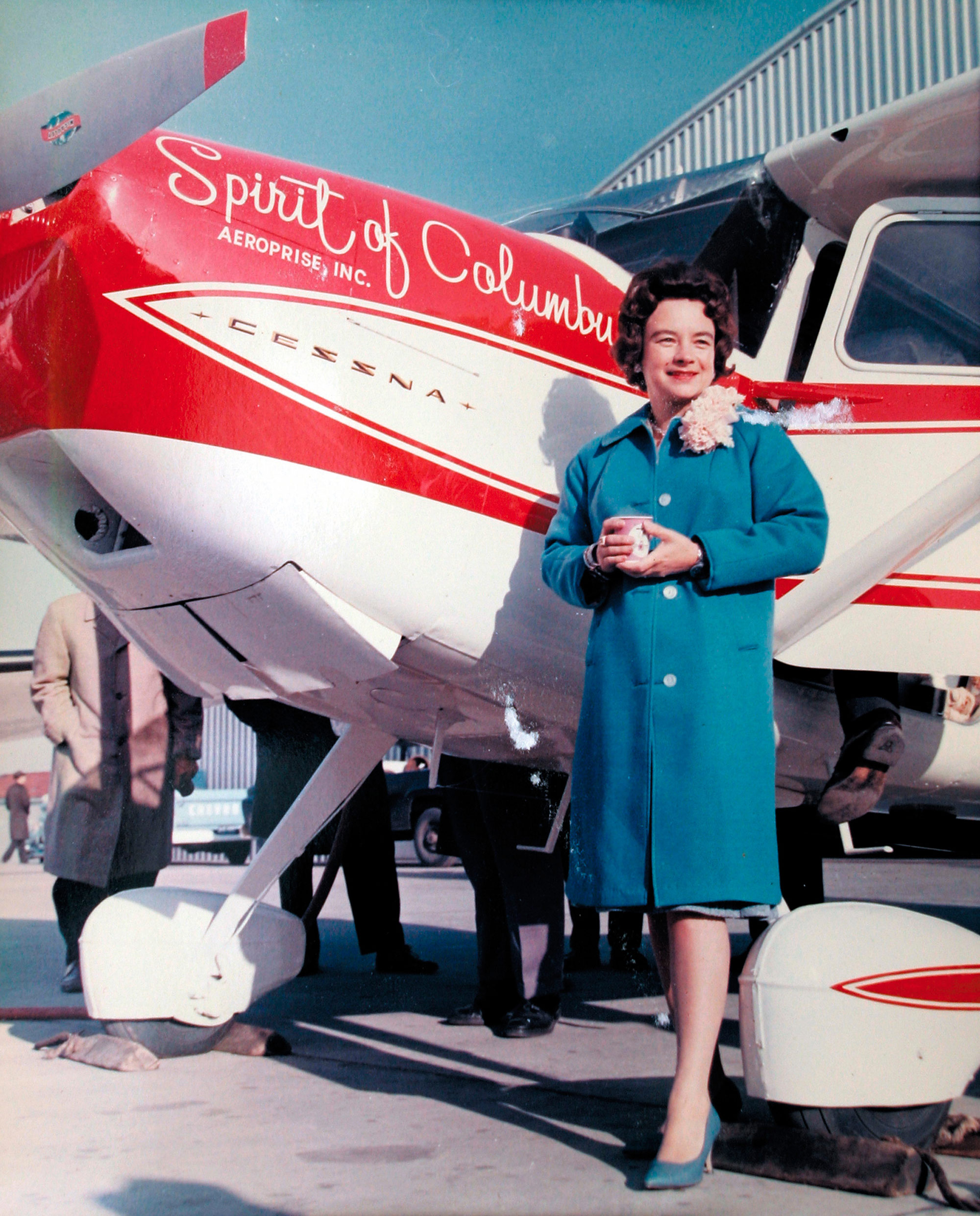
Geraldine (Jerrie) Mock was the first woman to fly solo around the world. Her 1964 trip lasted 29 days and earned her the Louis Bleriot medal from the Federation Aeronautique Internationale.
Credit: Jerry Mock Archives -
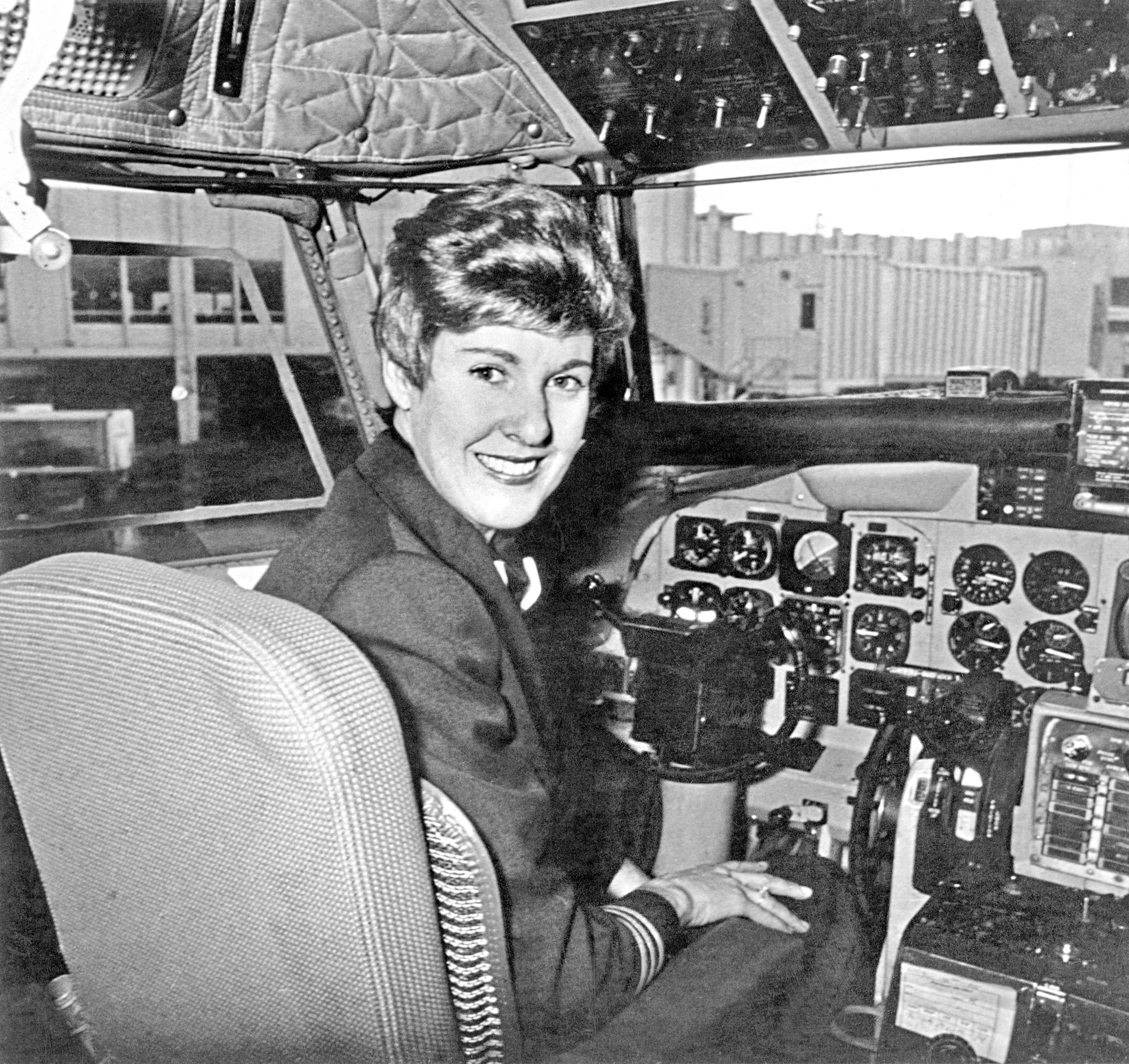
Emily Howell Warner was hired by Frontier Airlines in 1973, becoming the first female pilot at any U.S. commercial airline. She earned the title of captain three years later and also served as captain of a Boeing 737 for UPS. Warner broke through barriers when she became the first female member of the Air Line Pilots Association (ALPA) in 1974.
Credit: Smithsonian Institution, 7B-6845 -
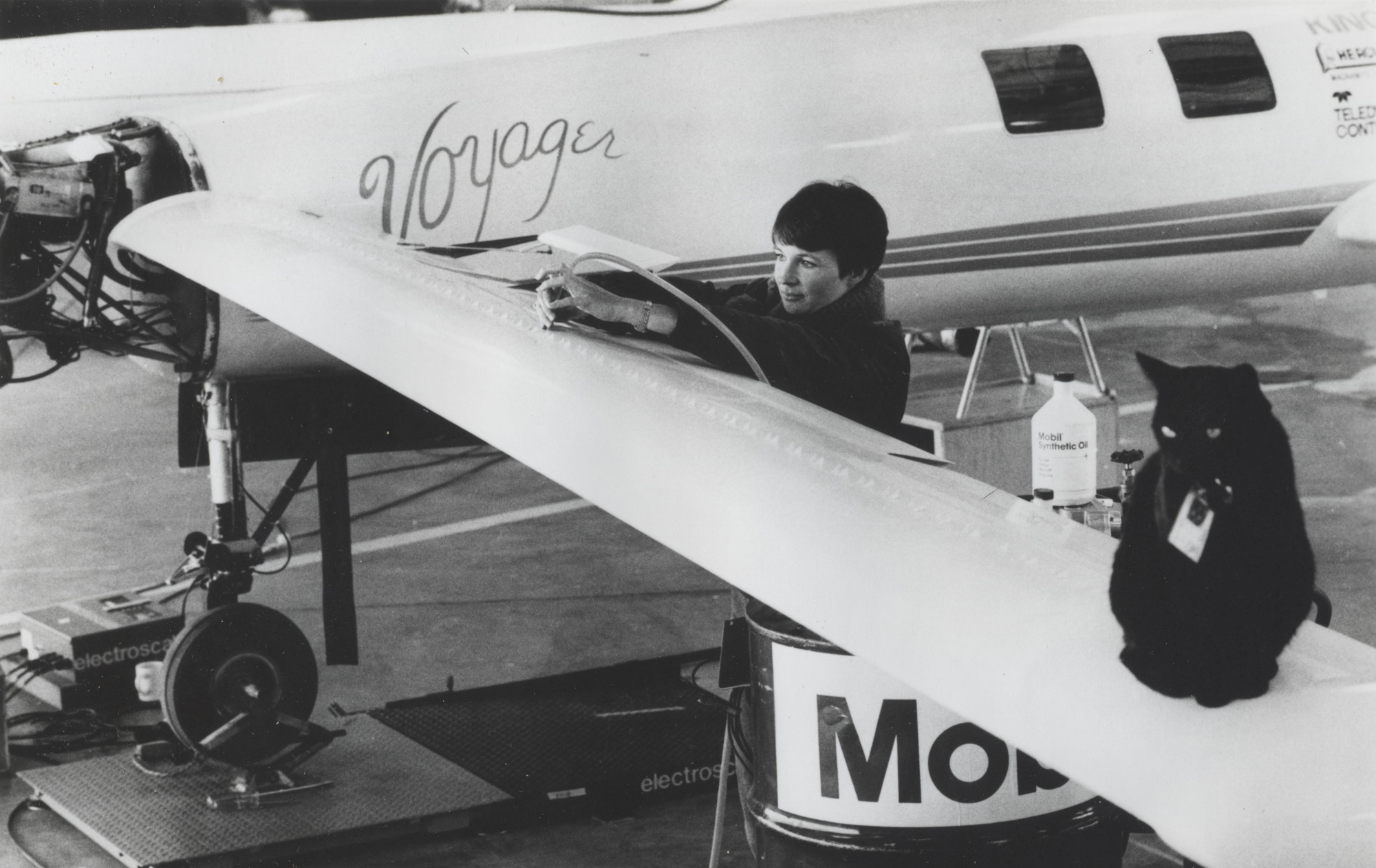
Jeana Yeager broke records on December 14, 1986 when she and Dick Rutan flew around the world non-stop and non-refuelled. Their flight in the “Voyager” lasted nine days and earned them the Collier Trophy, the most prestigious award in aviation.
Credit: Jeana Yeager Collection, James G. Gee Library Special Collections, Texas AM University-Commerce -
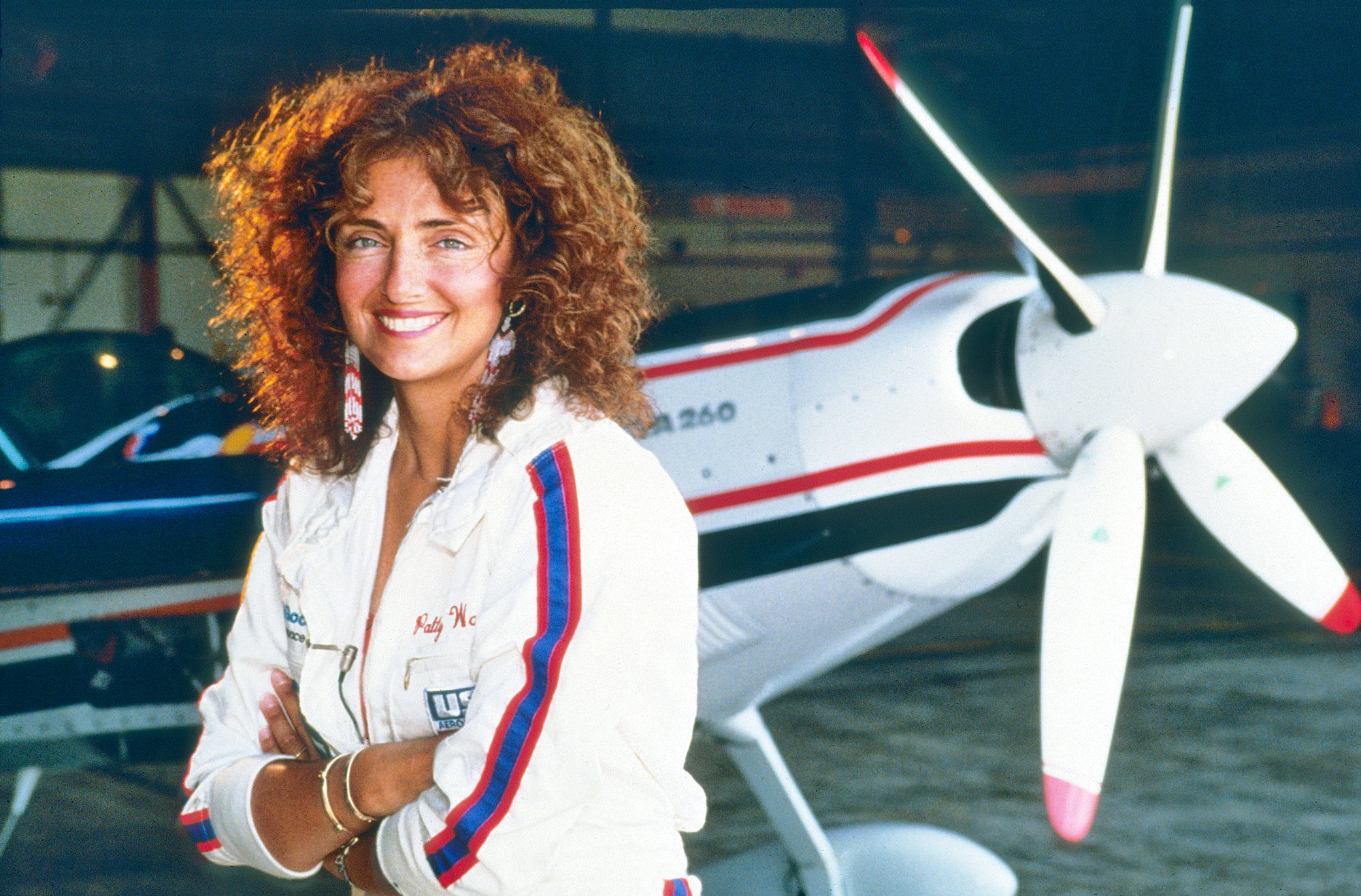
After earning her pilot's license in 1980, Patty Wagstaff competed in her first aerobatic meet in 1984, and went on to win the National Aerobatic Championship in 1991, 1992, and 1993. In 2004, Wagstaff was inducted into the National Aviation Hall of Fame. She wrote an autobiography, “Fire and Air: A Life on the Edge,” and practices and instructs aerobatics in St. Augustine, Florida.
Credit: Smithsonian Institution, 94-9327 -
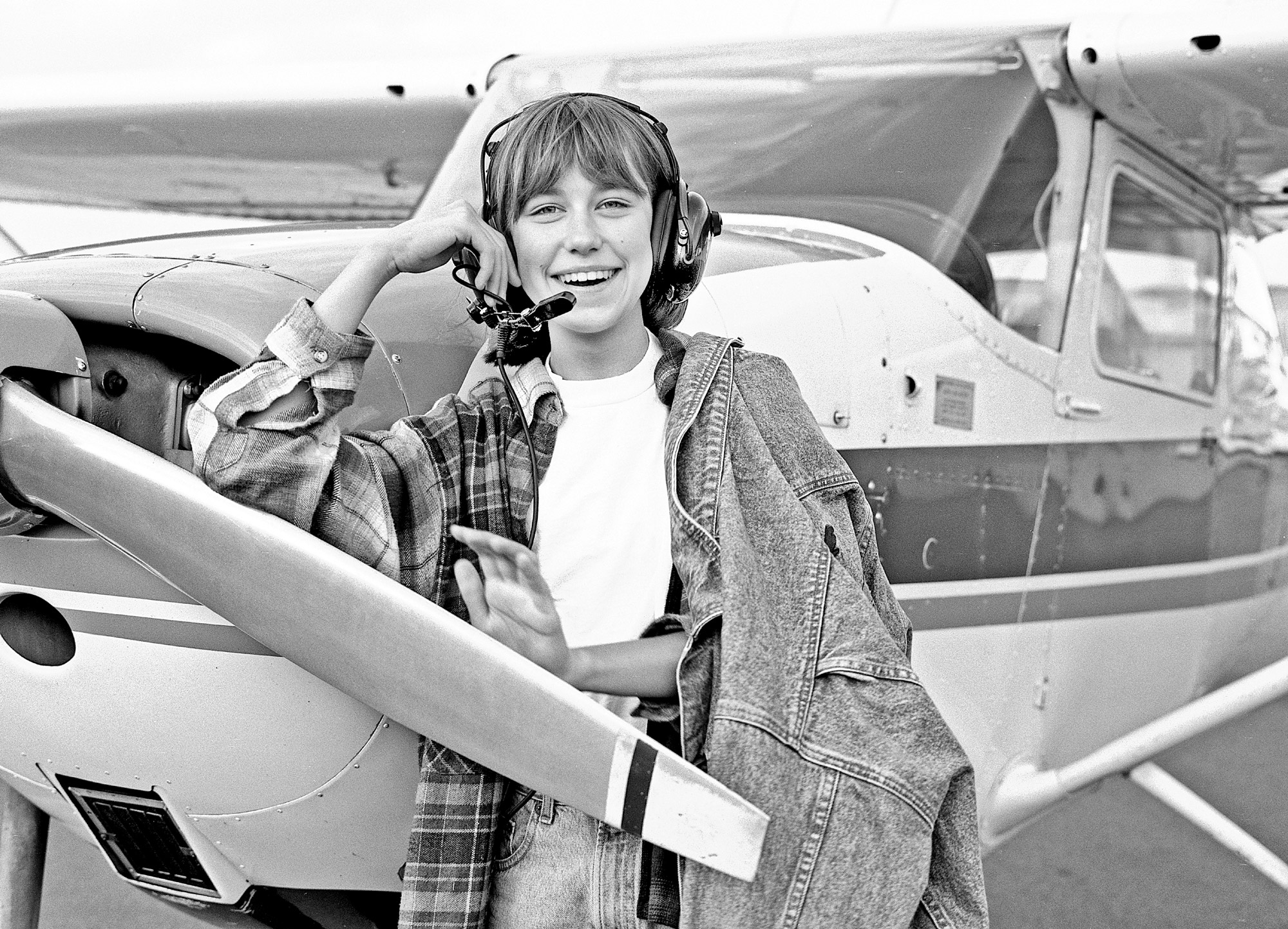
Victoria Van Meter flew across the United States in 1993 when she was 11 years old, becoming the youngest female pilot ever to do so. She followed up with another record a year later when she became the youngest pilot to fly across the Atlantic Ocean. She traveled in her Cessna 210 with an instructor but did all of the flying and navigating without assistance. After her flights Van Meter was interviewed on several television shows and published a book, “Taking Flight.”
Credit: Smithsonian Institution, 2004-14325




